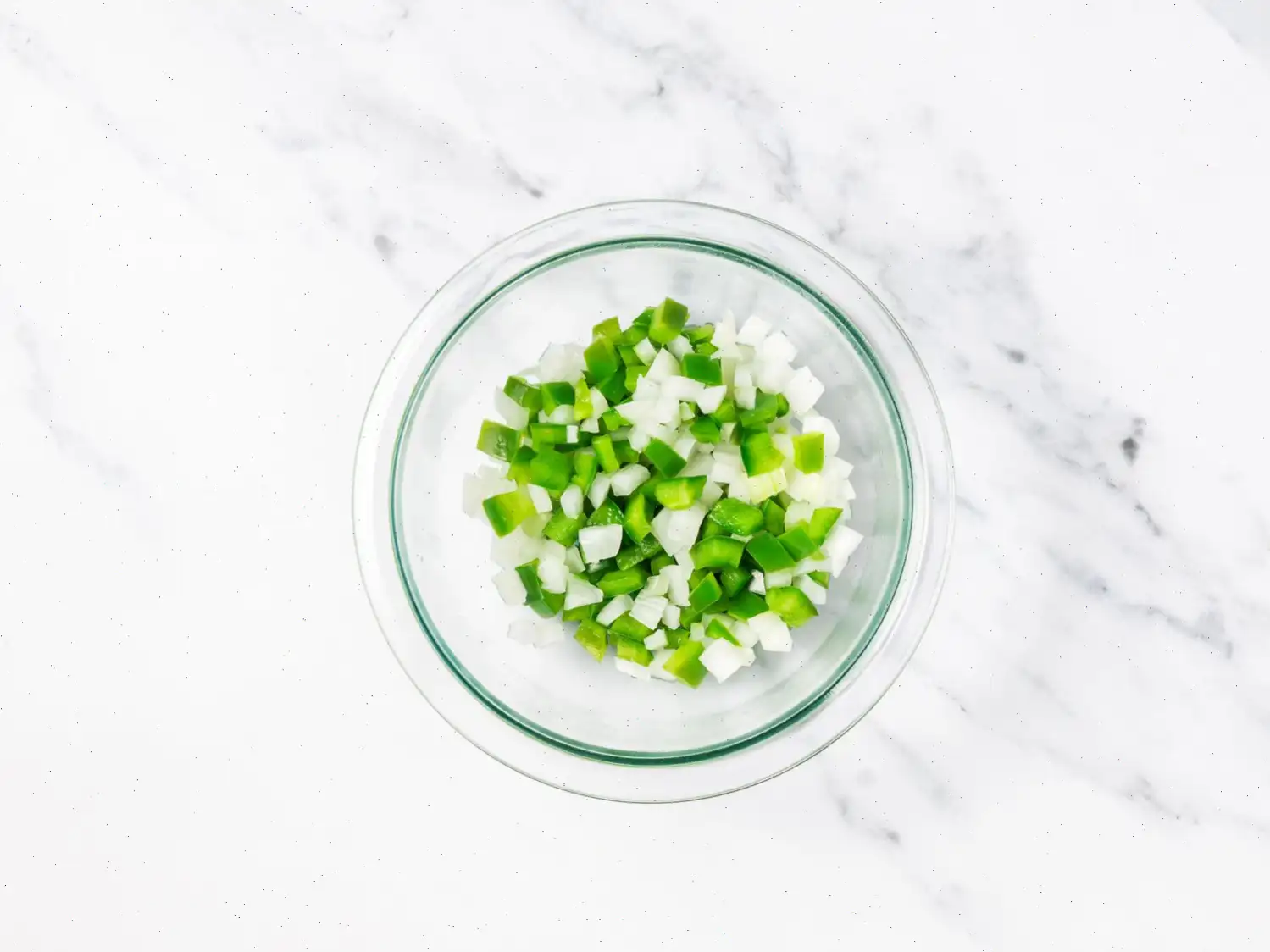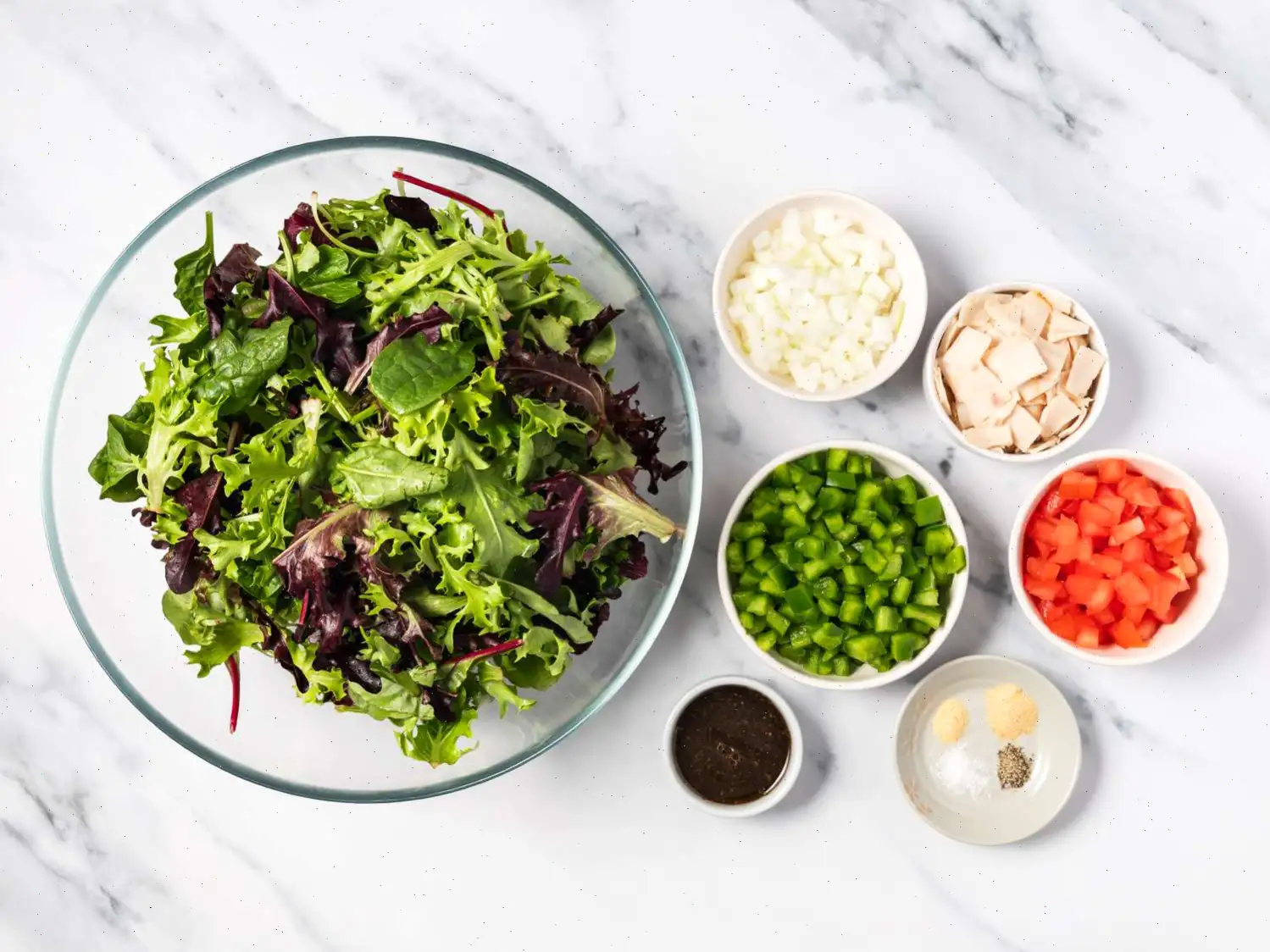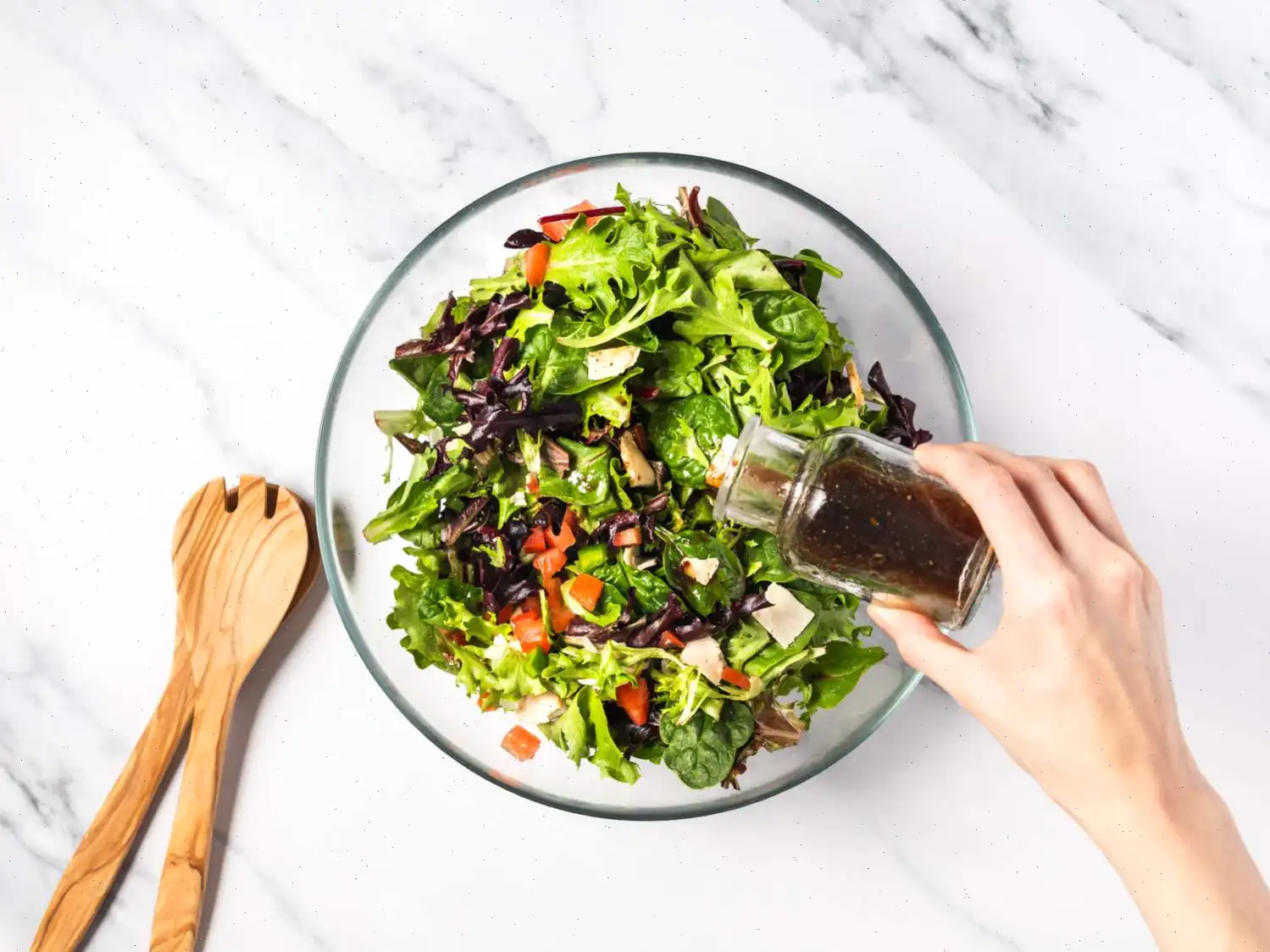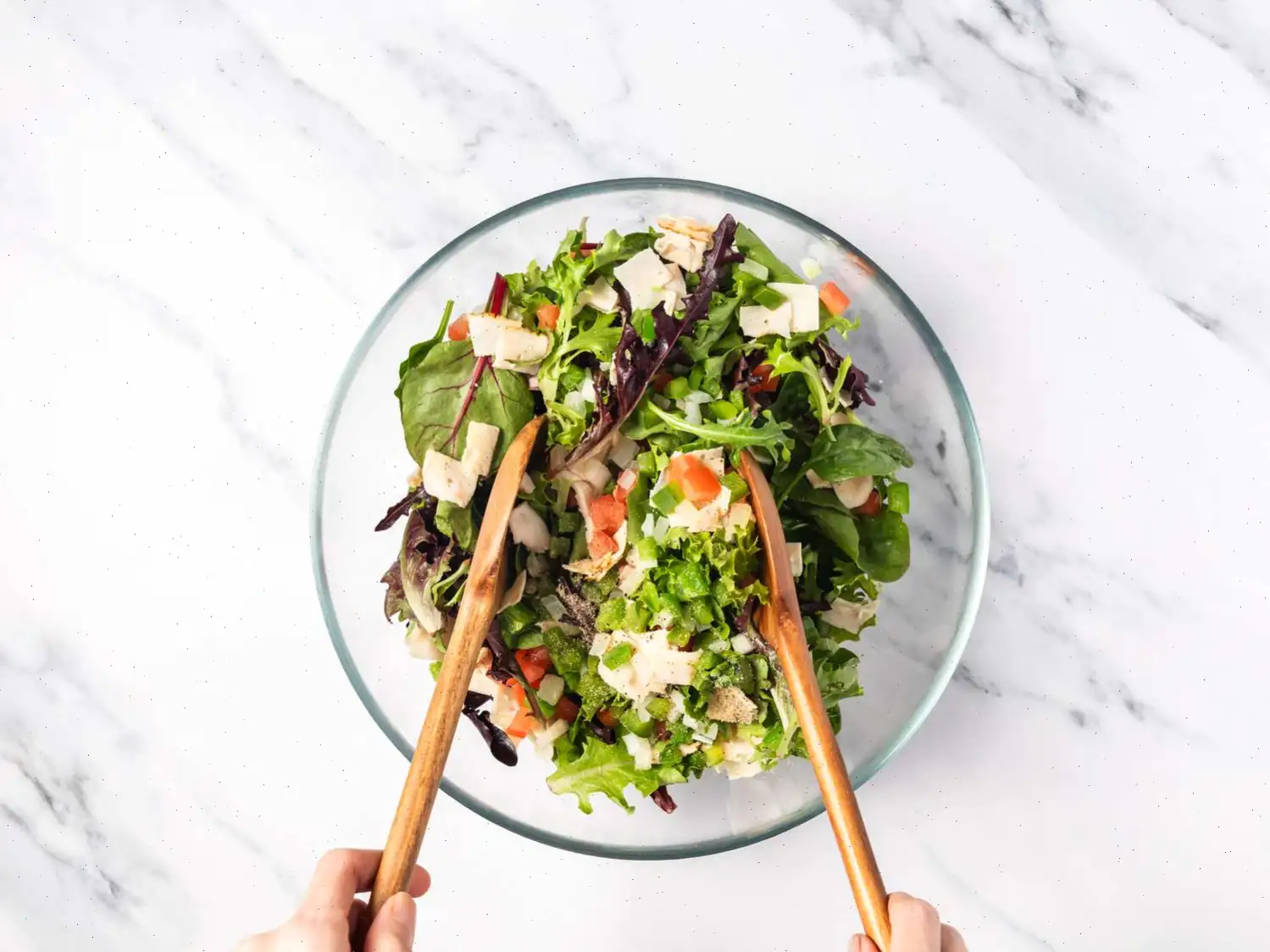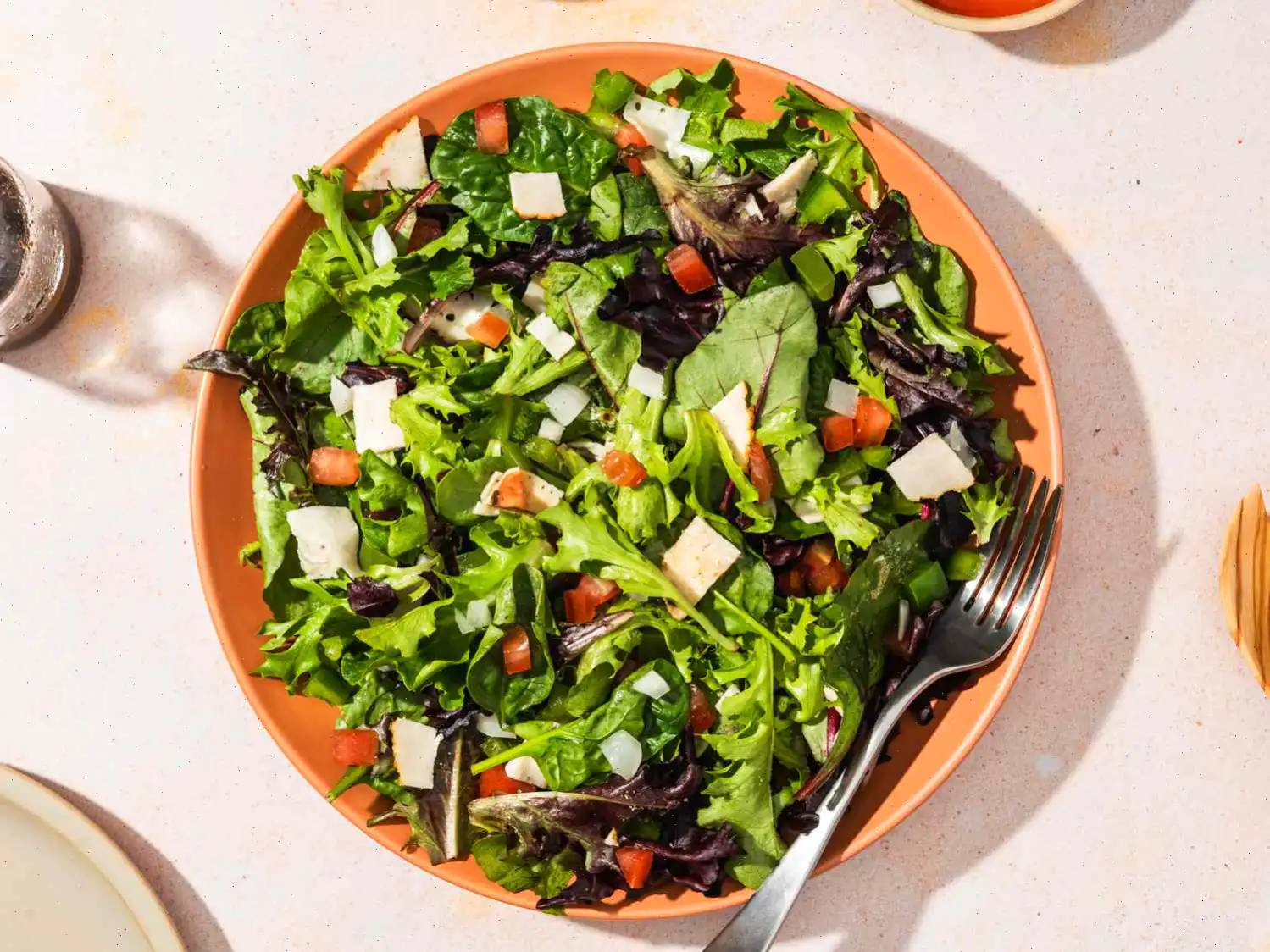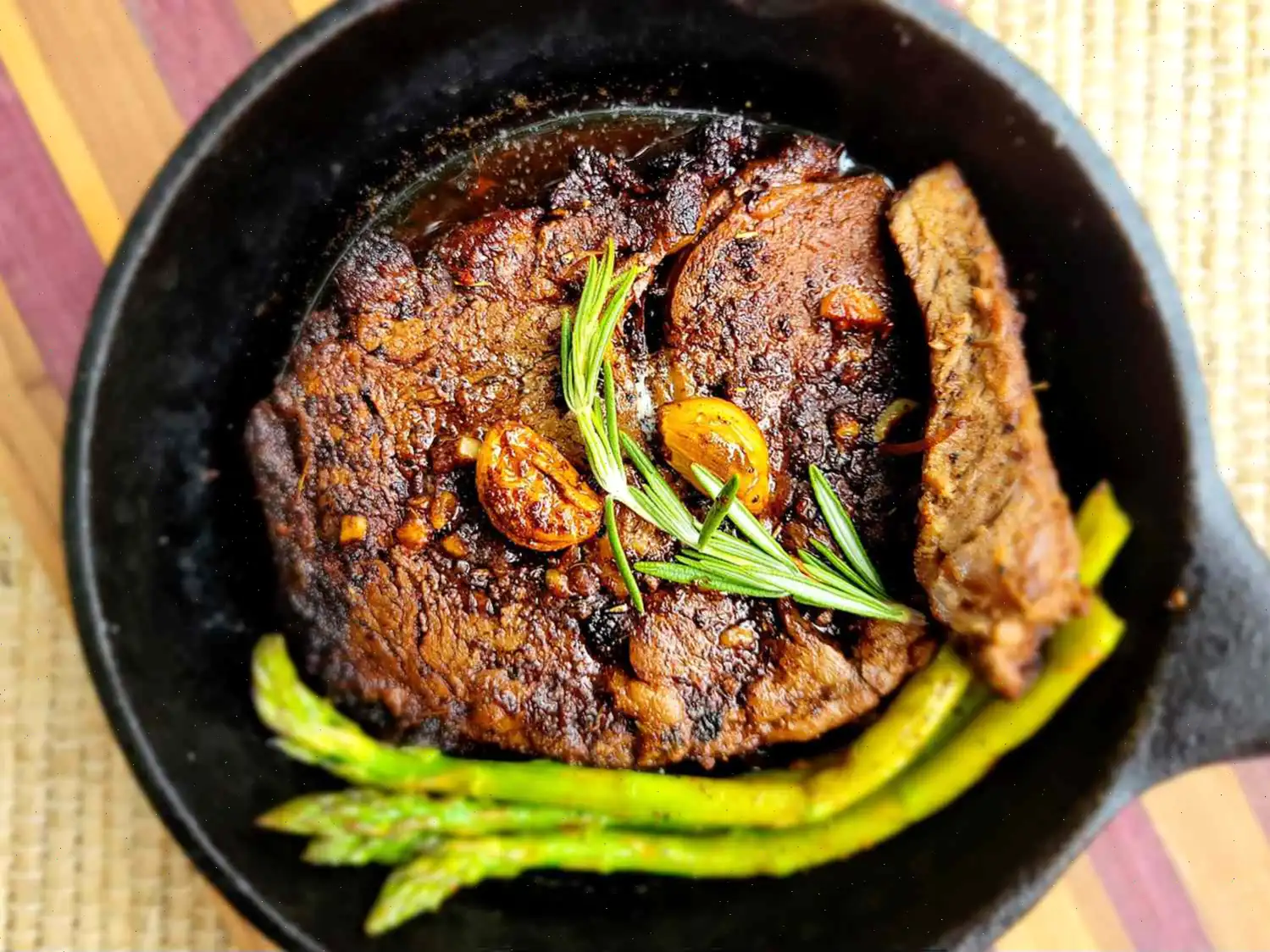
Green Salad Recipe
Ingredients
This recipe was developed at its original yield. Ingredient amounts are automatically adjusted, but cooking times and steps remain unchanged. Note that not all recipes scale perfectly.
Original recipe (1X) yields 8 servings
- cup chopped onion
- cup chopped green bell pepper
- 2 (10 ounce) packages mixed salad greens
- 4 thinly sliced chicken deli meat, chopped
- 1 tomato, chopped
- teaspoon onion powder
- 3 dashes garlic powder
- 2 pinches salt and ground black pepper to taste
- 3 tablespoons balsamic vinaigrette salad dressing
Directions
- Gather all the ingredients.
- Place the onion and bell pepper in a microwave-safe bowl. Heat in the microwave on high until soft, about 1 to 2 minutes. Set aside to cool.
- In a large salad bowl, combine the onion, bell pepper, salad greens, deli meat, and chopped tomato.
- Sprinkle with onion powder, garlic powder, salt, and black pepper. Toss everything well to mix.
- Pour the balsamic vinaigrette dressing over the salad and toss again to coat everything evenly.
- Serve immediately and enjoy!
Nutrition Facts (per serving)
| Nutrient | Amount | % Daily Value* |
|---|---|---|
| Calories | 47 | |
| Total Fat | 2g | 3% |
| Saturated Fat | 0g | 2% |
| Cholesterol | 3mg | 1% |
| Sodium | 163mg | 7% |
| Total Carbohydrate | 5g | 2% |
| Dietary Fiber | 2g | 8% |
| Total Sugars | 2g | |
| Protein | 3g | 5% |
| Vitamin C | 22mg | 24% |
| Calcium | 45mg | 3% |
| Iron | 1mg | 7% |
| Potassium | 303mg | 6% |
* Percent Daily Values are based on a 2,000 calorie diet. Your daily values may be higher or lower depending on your calorie needs.
** Nutrient information is not available for all ingredients. Amount is based on available nutrient data.
(-) Information is not currently available for this nutrient. If you are following a medically restrictive diet, please consult your doctor or registered dietitian before preparing this recipe for personal consumption.
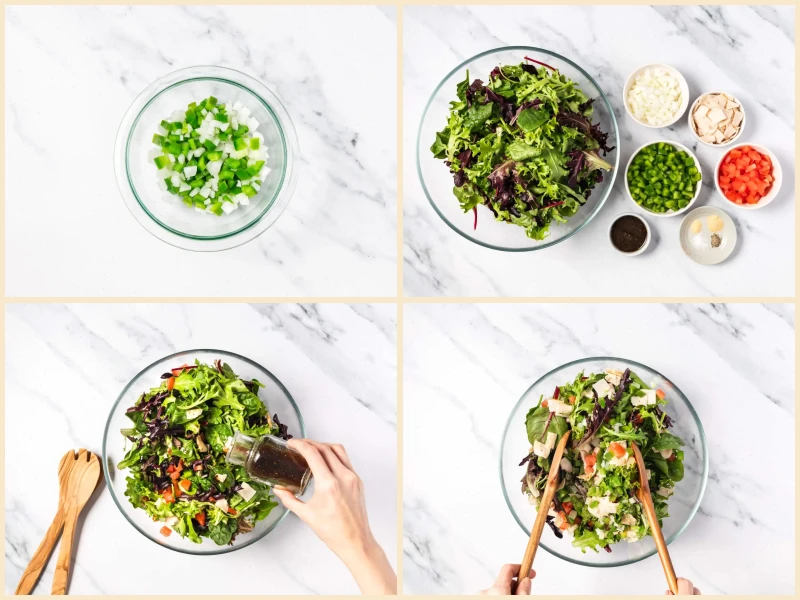

Green Salad is a versatile, easy-to-make dish that combines fresh vegetables with a variety of dressings and toppings. Whether served as a light appetizer or a filling meal, its a delightful and nutritious choice for any occasion. The salad includes a mix of greens, such as lettuce and spinach, complemented by tomatoes, bell peppers, onions, and sometimes deli meats for added protein.
History and Origins
The origins of the green salad can be traced back to ancient civilizations, where greens were gathered from the wild and eaten with simple dressings of oil and vinegar. Ancient Greeks and Romans were among the first to enjoy salads, although their versions were more primitive compared to today's popular varieties. The modern green salad, with its more complex combination of ingredients and dressings, evolved in Europe during the Renaissance, where it became a part of fine dining. In the United States, salads became more popular in the 19th century, with the introduction of refrigeration making it easier to store fresh vegetables year-round.
Regional Variations
Green salads vary widely depending on the region. In Mediterranean countries, for instance, olive oil and vinegar are the staple dressings, and ingredients like olives, feta cheese, and cucumbers are common. In the United States, the salad tends to incorporate a wide variety of vegetables, meats, and cheeses, reflecting the country's diverse culinary influences. In Central and South America, salads often feature avocados, corn, and black beans, while in Asia, salads may include ingredients like shredded cabbage, carrots, and soy-based dressings.
Difference from Similar Dishes
While many salads share some ingredients, the green salad stands out for its emphasis on fresh, leafy greens. Unlike fruit salads or pasta salads, which tend to be heavier and more filling, the green salad is often lighter and serves as a base for other dishes. It is also distinct from cole slaw or potato salad, which feature creamy dressings like mayonnaise. The green salads primary focus is on raw vegetables and their natural flavors, offering a refreshing, crisp contrast to heavier, cooked dishes.
Where to Serve It
Green salad is a common side dish at restaurants, especially in Western cuisines, where it complements main courses like grilled meats, pasta, and seafood. It is also frequently served at buffets and family gatherings, where it provides a healthy option among a variety of dishes. Many health-conscious individuals prepare it as a meal on its own, topped with protein-rich ingredients like grilled chicken, tuna, or cheese. In casual settings, such as picnics or barbecues, green salads are a popular choice due to their ease of preparation and ability to pair with a wide variety of foods.
Interesting Facts
- The word salad comes from the Latin word sal, meaning salt, which was used to season the vegetables in ancient times.
- Salads are known to be a great source of vitamins and fiber. Dark leafy greens, in particular, are packed with essential nutrients like Vitamin K, Vitamin C, and folate.
- Green salads can be tailored to fit any dietary need, from gluten-free to vegan. By adjusting the dressing and toppings, you can create a salad that meets specific nutritional requirements.
- Many chefs recommend tossing the salad with the dressing just before serving to maintain the freshness and crispness of the vegetables.
In conclusion, the green salad is more than just a side dish. With its rich history, regional varieties, and ability to adapt to different tastes and dietary needs, it remains a beloved dish worldwide. Whether youre enjoying it at a casual family dinner or a fine dining restaurant, the green salad continues to be a refreshing and nutritious choice.
FAQ about Green Salad Recipe
Comments
Betty Wright
03/04/2025 10:29:22 AM
Salads are fantastic! I enjoy creating mine with a mix of onion, grape tomatoes, shredded carrots, celery, tuna, croutons, and of course, lettuce and dressing. The beauty of making salads is that you can customize them to your liking by adding or subtracting ingredients. I personally like to rummage through the fridge and use ingredients that are close to expiration, preventing waste. Additionally, you can experiment with adding fruits, nuts, or any other ingredients you fancy. It's recommended to start with a small portion to test the flavors and ensure everything complements each other. With salads, the possibilities are truly endless!
Scott Edwards
04/17/2023 06:37:46 PM
This salad was both simple to prepare and delicious! I particularly enjoyed the addition of chopped chicken deli meat for a protein boost. Highly recommend!
Elizabeth Rodriguez
09/14/2024 02:41:48 AM
I decided to try the dressing on red leaf lettuce with croutons, and it was absolutely delicious! I used a premium white balsamic vinegar as the main ingredient, mixed in some spices, and lightly drizzled the dressing over the lettuce. It was so tasty!
James Davis
05/05/2023 03:26:32 AM
Simply amazing nutritious salad.
George Adams
12/27/2024 08:07:49 PM
Straightforward... yet incredibly delicious! With seasonal fresh vegetables, this salad is ideal for summer. Swapped out deli meat for shredded carrot. Fantastic recipe!
Ronald Robinson
05/03/2025 02:13:48 AM
Sure! Here is the rewritten review: "Delicious!"
Ashley Allen
01/03/2025 01:36:10 PM
An excellent foundation for a versatile salad that you can personalize to your taste. I included avocado, egg, celery, cucumber, tomato, green onion, spinach, iceberg lettuce, and chicken in mine. The flavors melded beautifully with a simple dressing of extra virgin olive oil and white vinegar, with just a hint of pepper to enhance the freshness. To elevate it further, I sprinkled in some tasty cubes of goat cheese.
Sandra Robinson
02/10/2025 12:49:58 AM
I included boiled egg and cheese...Delicious!
Barbara Ramirez
03/21/2024 08:14:10 AM
I omitted the onions and added feta cheese, cucumbers, and leftover roasted chicken. I also used red pepper instead of green. Overall, this salad turned out to be quite tasty.


